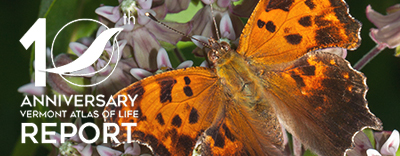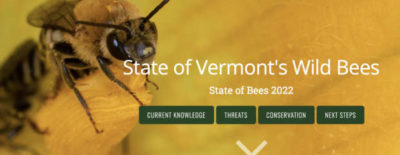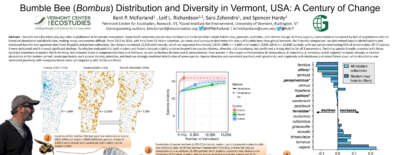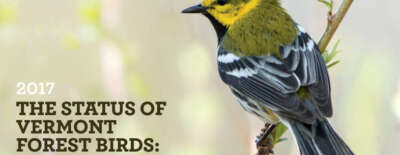
Vermont Atlas of Life 10th Anniversary Report
Vermonters have risen to the conservation challenge: our community scientists lead the nation with more field observations per capita than any other state. We use nearly 8 million observations from almost 12,000 species reported from across the state to help establish a biodiversity baseline, critical for understanding and measuring biodiversity changes in the future. We’ve identified potential biodiversity hotspots and made predictions about future impacts of climate change on the state’s biodiversity. Together, this information will help target land conservation efforts, and much more. Learn more »

The State of Vermont's Wild Bees 2022
With >350 species in Vermont, wild bees are a diverse and ecologically important. As one of the most important groups of pollinators, bees provide essential ecological and agricultural services. Documented declines of a few species have caused concern about a possible collapse of all bee populations. Our understanding of the conservation status, threats, and even the natural history of many species is still in its infancy. Over the past decade, thousands of community scientists and professional biologists have helped us to survey wild bees across Vermont, allowing us to assess their conservation status for the first time. Read the report »

The Status of Vermont Bumblebees 2018
A 25-year study of Vermont’s forest birds, including woodpeckers, warblers and other iconic species, has documented a 14.2 percent overall population decline during the period, raising concerns about birds and forests alike. In one of the longest-running studies of its kind in North America, VCE also issued practical recommendations for landowners who may want to conserve or manage their forests for bird abundance and diversity. Learn more »

The Status of Vermont Forest Birds 2017
A 25-year study of Vermont’s forest birds, including woodpeckers, warblers and other iconic species, has documented a 14.2 percent overall population decline during the period, raising concerns about birds and forests alike. Learn more »






